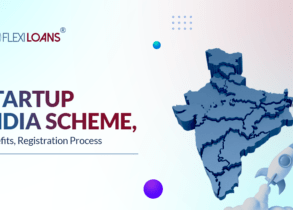Jul 03, 2023
Feb 27, 2024

Food, shelter, and clothing are the basic needs of human beings in society. In India, with the second-largest population globally, employment opportunities for the masses are paramount. The textile sector is one such sector that can provide employment opportunities to both skilled and unskilled workforce.
This is because the textile sector is labour-intensive. Presently, it provides employment opportunities to about four crores, fifty lakh people. It is the second-largest sector in employment creation, with the agriculture sector being the first one. In addition, India has a rich heritage with regard to textiles, fabrics, and apparel from ancient times.
Hence, to promote the textiles sector and other sectors, the Union government has started the Production Linked Incentive (PLI) scheme for textiles. This scheme would be operational for nine and half years (24/09/2021 to 3/03/2030), and incentives would be payable to selected companies for five years.
PLI Incentive Updates
In recent updates, production-linked incentive (PLI) schemes have demonstrated remarkable outcomes in India, including increased production, job creation, and exports. These schemes have attracted a whopping 76% rise in foreign direct investment (FDI) in the manufacturing sector, reaching $21.34bn in 2021-22. With an incentive outlay of around $26bn (Rs. 1.97 lakh crores), PLI schemes are here to stay to boost production capabilities and create global champions in 14 sectors.
With 733 approved applications in these 14 sectors and an expected investment of Rs. 3.65 lakh crores, PLI schemes have already realised an actual investment of Rs. 62,500 crores. This has led to a remarkable boost in production and sales, exceeding Rs. 6.75 lakh crores, as well as the creation of around 325,000 jobs by March 2023.
For example, one PLI scheme has successfully convinced major smartphone companies to relocate their suppliers to India. Within a mere three years, India has achieved a significant value addition of 20% in mobile manufacturing, outperforming Vietnam’s 18% achieved over 15 years and China’s 49% achieved over 25 years.
November 2020
PLI schemes rolled out in the following sectors in November 2020:
| Sector | Overseeing Department |
| Prescription Medications | Department of Pharmaceuticals |
| Technology or Electronic Products | Ministry of Information and Electronics Technology |
| Networking and Telecom Products | Department of Telecommunications |
| Food Products | Ministry of Food Processing Industries |
| ACS and LED (White Goods) | Department for Promotion of Industry and Internal Trade |
| Energy-Efficient Solar PV Modules | Ministry of New and Renewable Energy |
| Auto Components and Automobiles | Department of Heavy Industry |
| ACC (Advance Chemistry Cell) Battery | Department of Heavy Industry |
| Specialty Steel | Ministry of Steel |
| MMF Segment and Technical Textiles | Ministry of Textiles |
PLI schemes rolled out in the following sectors in March 2020:
March 2020
| Sectors | Overseeing Departments |
| Drug Intermediates (DIs), Key Starting Materials (KSM) and Active Pharmaceutical Ingredients (APIs) | Department of Pharmaceuticals |
| Electronics Manufacturing on a Large Scale | Ministry of Electronics and Information Technology |
| Medicinal Devices Manufacturing | Department of Pharmaceuticals |
Read on to discover the incredible benefits and potential of PLI incentives as well as their significance.
Objectives of PLI Schemes
- PLI schemes are transformative and work towards enhancing India’s compliance with World Trade Organization (WTO) commitments and promoting a non-discriminatory and neutral environment for domestic sales and exports.
- The schemes provide active support to food manufacturing companies that meet the eligibility criteria, enabling them to expand their processing capacities, establish strong brands abroad, and become global champions in their industry.
- By strengthening Indian food product brands, PLI schemes aim to enhance their global visibility and acceptance, resulting in increased employment opportunities beyond farming.
- These schemes safeguard farmers’ income by ensuring fair and lucrative prices for agricultural products.
Salient Features of PLI Schemes
- These initiatives help bring back ancient designs and customs, empowering neglected traditions in the country.
- Increased production under PLI schemes drives growth and development in various sectors.
- Focus on manpower and creativity fosters adaptable building systems that help combat climate change and potentially reverse its effects.
- Through PLI schemes, the government encourages investment in plants and machinery to meet specified requirements during the first two years of operation.
- A significant allocation of Rs. 10,900 crores in the central sector is available for investment.
- The schemes provide incentives for production in essential food categories such as ready-to-eat foods, millet-based products, processed fruits and vegetables, seafood products, and mozzarella cheese.
- The duration of the PLI schemes spans six years, from 2021-22 to 2026-27, revolutionising industries and creating opportunities for all.
- These schemes cover small businesses that create innovative and organic products like free-range eggs, poultry meat, and egg products.
- Entities specialising in innovative and organic products are exempt from the minimum sales and mandatory investment requirements.
- PLI initiatives provide support for branding, marketing, and grants for signage, shelf space, and international marketing, with the overarching aim of promoting the development of strong Indian brands globally.
Targets and Strategies for Implementation Under PLI Schemes
- PLI schemes are implemented nationwide, incorporating specific goals and strategies.
- Specific project management agencies (PMAs) are responsible for implementing these initiatives. They will evaluate applications, verify eligibility, and process incentive payments.
- PLI incentives will be available over six years, ending in 2026-27. The following year will see incentive payments being made annually.
- A set fund limit ensures controlled costs for these schemes. Each beneficiary will have a maximum incentive predetermined, which they cannot exceed regardless of their performance.
- The PLI programme aims to expand processing capacity by 2026-27, resulting in the production of processed foods worth a total of Rs. 33,494 crores and creating job opportunities for around 2.5 lakh people.
Methodology and Mechanisms Associated with PLI Administration and Implementation
To enjoy the maximum benefits of PLI, there is some important information that you should keep in mind:
- The cabinet secretary chairs the Empowered Group of Secretaries at the Centre, ensuring effective monitoring of these schemes.
- An Inter-Ministerial Approval Committee (IMAC) will assess the eligibility of applicants and determine their approval for the schemes. IMAC will also decide on the sanction and release of PLI incentive funds.
- The ministry will diligently develop an annual action plan encompassing a wide range of activities to propel these initiatives forward.
- There is a comprehensive third-party evaluation process and a mid-term evaluation mechanism to ensure transparency and accountability in PLI schemes.
What is the PLI Roadmap to boost Indian manufacturing?
The Central Government has sanctioned an ambitious PLI scheme for fourteen key sectors of the economy. These sectors include pharmaceuticals, electronics, food products, textiles, etc. This scheme offers a type of subsidy to the concerned sector so that it can overcome any disadvantage faced by it. Here, incentives are offered to the Indian manufacturers when they achieve incremental sales. Incremental sales boost manufacturing in the country and create employment opportunities. It also promotes the Atma Nirbhar Bharat mission of the government. Under the PLI scheme, the government sanctions a given amount of money directly from the Union budget to a given sector.
Purpose of PLI Scheme
The PLI scheme was started to increase the scale of the domestic manufacturing industry so that imports are reduced and employment opportunities are promoted. With the PLI scheme, the government intends to bring about women’s empowerment and enhance the contribution of women to the general economy of the workforce.
Who launched the PLI scheme for textiles and other sectors?
NITI Aayog started working on developing a set of objective criteria. It involved determining value addition done by the companies which benefited from the financial rewards announced under PLI schemes. Union Finance Minister, Smt. Nirmala Sitharaman announced allocating Rs. 1.97 lakh crores for the PLI Scheme, covering fourteen key sectors. The aim is to make India a manufacturing hub, increase production to 30 lakh crore in the next five years, and generate employment opportunities.
Who can apply for the PLI scheme for the textile sector?
This scheme can be availed by any person (including company/firm/limited liability partnership/trust) who intends to start a separate manufacturing company and make a minimum investment of Rs. 300 crore for producing notified products. Incentives would be provided to companies that achieve a minimum turnover of Rs. 600 crore through manufacturing and selling such notified products in the first performance year. Before investing the required amount, each participant needs to incorporate a new company under the Companies Act, 2013.
Incentives Under PLI Scheme for Textile Sector
Incentives would be provided to the participants who achieve minimum investment and incremental turnover as specified in the scheme. The participants need to achieve the prescribed turnover target for the year and a 25% increase in turnover over the immediately preceding year’s turnover in the succeeding years. The formula for computing the incentives is as follows:
“Net Incremental Sales within the cap of Notified Product(s) excluding taxes multiplied by the Rate of Incentive in percentage for the Performance Year.”
What is the PLI Roadmap for the Textiles Industry?
Under the PLI roadmap for the textile sector, the Union government has approved 61 applications from companies. The selected applicants may bring in an investment of Rs. 19,000 crores. Out of 61 applications approved, seven are foreign companies. This potential investment under the PLI roadmap is expected to generate a turnover of Rs. 184,917 crore and employment for 2,40,134 people. The financial outlay of the government under this scheme is Rs. 10,683 crores for five years. This outlay would be applicable to give a boost to textile products such as Man Made Fabric (MMF) apparel, MMF fabrics (14 categories), and products related to technical textiles (10 categories).
The items covered under MMF fabrics include woven fabrics with nylon, polyester, and others. Technical textiles included under the scheme are defence textiles (bulletproof vests, clothing, and tents used in submarine and fighter aircraft, safety airbags, tyre cords, protective clothing such as personal protective equipment, and fabrics and clothing used against fire accidents).
Investment, Turnover, and Incentives
The applicants selected under the PLI scheme need to demonstrate the following in Part I and Part II of the scheme’s implementation:
- In Part I, they are expected to invest a minimum of Rs. 300 crore and generate a minimum turnover of Rs. 600 crore. The investment would be in the plant, machinery, R&D activities, and civil works but exclude investment in land and administrative buildings.
- In Part II, a minimum investment of Rs. 100 crore is required, and a minimum turnover of Rs. 200 crores. The investments would go to inspirational districts, rural areas, and Tier 2 and Tier 3 towns.
For Part I, the available incentives start from 15% for the first year, decreasing by one percentage point every year for the next four years. For Part II, the incentives start from 11% for the first year, decreasing by one percentage point every year for the next four years. For both Part I and Part II, the incentives are available only on the incremental turnover of 25%. Let us understand by an example. Let in the first year the prescribed turnover be Rs. 600 crore. Then in the second year, the prescribed turnover should be Rs. 750 crore (i.e.Rs. 600 crore + 25% of Rs. 600 crore). In the first year, the incentive is computed on Rs. 600 crores, and in the second year, the incentive is credited only on Rs. 150 crores (i.e., 25% increment on the first year’s turnover of Rs. 600 crores). This procedure continues for the five-year period.
Aims of Textile PLI Scheme
Following are the aims of this PLI scheme for the textile sector:
- Through the incentives given by this scheme, textile companies operating in India and also textile workers can compete with the Chinese textile mills and undertake productive ancillary activities.
- According to the commerce ministry, there is a huge demand for Indian textiles in the international markets. This PLI scheme for the textile sector intends to grab the demand by acquiring skills related to the design of MMF and garments.
- Government support through this PLI scheme for the textile sector and the artisans working in this domain would create a ripple effect in other areas of the economy.
- This specific textile PLI scheme is expected to increase textile parks in India. Thus, in 10 years, India may become the textile hub of the world.
- The textile company management can use the grants received under the PLI for the textile sector to automate the textile factories. This would bring in economies of scale.
Sector-Wise PLI Eligibility Criteria
PLI eligibility varies based on the approved industry. Here are some of the criteria:
- Telecom units need to meet investment growth and manufacturing sales requirements.
- MSME companies can receive investments of up to Rs. 10 crores, while other companies can receive investments of up to Rs.100 crores.
- SMEs and other companies must have at least 50% of their subsidiaries compliant with food processing regulations.
- SME selection considers factors such as the firm’s proposal, product innovation, and level of product development.
- Pharmaceutical businesses must undertake greenfield projects and maintain a net worth of at least 30% of total investments.
- Domestic value addition (DVA) requirements stand at about 90% for fermentation-based products and at least 70% for chemical syntheses.
PLI Scheme Contribution towards Employment Generation
Since the creation of these schemes, India’s processing capacity has continued to expand, resulting in a substantial processed/ready-to-eat food output of Rs. 33,494 crores. Furthermore, these initiatives will pave the way for the creation of employment opportunities for nearly 2.5 lakh individuals by the year 2026-27.
PLI Schemes and Custom Duty
These schemes actively reduce customs duty, to the benefit of certain industries including raw material importers in the textile industry, as well as the shipping sector. The reduction in customs duty positively impacts shipping costs and ensures the long-term viability of central public sector industries. The PLI schemes also improve logistics and infrastructure related to railways, shipping, and highways. In this regard, the government has allocated Rs. 15,700 crores for the establishment of new shipping lines.
PLI schemes have also resulted in the re-evaluation of 400 customs duty exemptions and concessions. In addition, the announcement of Manufacturing and Other Operations in Warehouse Regulations (MOOWR) enables considerable duty savings for eligible companies.
India’s Textile and Apparel Exports from 2018 to 2022
Here is the data on India’s textile and apparel exports from fiscal year (FY) 2018 to FY 2022:
| Commodity | 2017-18 | 2018-19 | 2019-20 | 2020-21 | 2021-22 |
| Textile and apparel (including handicrafts) | $37.55bn | $38.40bn | $35.18bn | $31.59bn | $44.44bn |
Unlock Financial Assistance from FlexiLoans
Ready to take your business to new heights? Look no further than FlexiLoans! Experience the ease of loan sanctioning with FlexiLoans’ user-friendly platform. Leave behind the frustrations of dealing with time-consuming approval processes and the burden of collateral requirements. Visit FlexiLoans today and discover how easy it is to obtain the financing you need to fuel your growth.
Conclusions
The Textile and garment sector is the backbone of the fashion industry. With its wide variety of clothing and fabrics, India can become the global leader in this sector. This PLI scheme for textiles and other related areas can go a long way in helping this sector. It has laid out a unique PLI roadmap to achieve its true potential in terms of exports. In a nutshell, the textile sector can carve out a niche in international trade and commerce.







